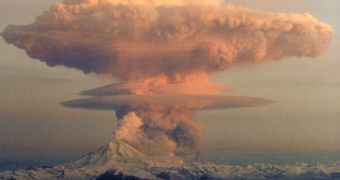All volcanic eruptions are dangerous and powerful, obviously, but, among them, the Plinian type takes the cake. It includes extremely intense eruptions that regularly take place after many years of volcanic inactivity, and it is, at times (but not always), preceded by short periods of seismic activity. For the first time ever, scientists have recently been able to measure the speed at which magma rises from the interior of the volcano to the surface, AlphaGalileo reports.
To put the strength of a Plinian eruption into perspective, consider that Mount Vesuvius (Italy), Mt. Pinatubo (the Philippines), and Mt. St. Helens (the US) all erupt in this manner. Vesuvius is credited with destroying the Roman cities of Pompeii and Herculaneum, alongside their inhabitants, in a single blast, covering everything with a thick layer of lava and ash. In an attempt to determine exactly how fast magma moved underground before catastrophe stroke, Professor Donald Dingwell, from the Ludwig-Maximilians-Universitat (LMU), in Munich, Germany, teamed up with Professor Jonathan Castro, from the University of Orleans, in France.
In their investigations, the researchers used lava that had erupted in May 2008 from Southern Chile's Chaiten volcano. Their results are to be feared. Apparently, the magma was able to move from underneath the volcano all the way to the surface in less than four hours, which means that, even if monitoring stations ring the alarm in time, there may be little time to evict people from the areas that may be affected by the disaster. This type of eruptions can end in a single day, but it can also take weeks to months until it stops.
“This figure is very disturbing, because it implies that a Plinian eruption can develop with astonishing speed. In such a case, it would be well nigh impossible to give adequate warning of an impending eruption, in particular if the period of activity preceding it also happened to be very short,” Dingwell adds. “The problem with [...] short periods of heightened activity is that they may, but do not necessarily, forecast an eruption. In the case of Chaitén we knew that we were dealing with a highly explosive volcano. What we did not know was what kind of activity would give notice of an impending eruption,” he concludes.

 14 DAY TRIAL //
14 DAY TRIAL //